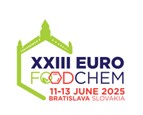Vedecký časopis - archív
Journal of Food and Nutrition Research
Súhrny čísla 1 / 2019
Boltar, I. – Čanžek Majhenič, A. – Jarni, K. – Jug, T. – Bavcon Kralj, M.
Research of volatile compounds in cheese affected by different technological parameters
Journal of Food and Nutrition Research, 58, 2019, č. 1, s. 75-84
Mojca Bavcon Kralj, Department of Sanitary Engineering, Faculty of Health Sciences, University of Ljubljana, Zdravstvena pot 5, 1000 Ljubljana, Slovenia. E-mail: mojca.kralj@zf.uni-lj.si, tel.: +386 1 300 11 621
Received 1 February 2018; 1st revised 15 May 2018; 2nd revised 21 August 2018; accepted 20 September 2018; published online 28 January 2019
Súhrn: Nanos cheese is a hard type of cheese produced from milk obtained from cows grazing in a limited specific geographic area (Vipava valley, Slovenia). This study is the first report about the influence of certain technological parameters and their impact on the Nanos cheese flavour, which can be meant as a model of hard-type cheeses. Apart from collecting the milk from different geographic areas, ripening location, ripening method (classical vs in grape marc), ripening temperature (12 °C, 18 °C) and the amount of starter culture were changed and evaluated. For the determination of the profile of volatile organic compounds (VOCs) in the cheese, solid phase micro extraction (SPME) coupled to gas chromatography – mass spectrometry (GC-MS) was used. Doubling the addition of the starter culture contributed to higher levels of certain VOCs (e.g. benzaldehyde responsible for nutty flavour). Higher temperature during ripening increased the content of some ethyl esters and alcohols from 2 to 10-fold and it had an effect on appearance of the cheese. It was also observed that cheeses ripened in grape marc had a higher content of most esters. The differences in VOCs profile were not significant in cheeses from different geographic areas and ripening locations.
Kľúčové slová: cheese; volatile compound; starter culture; technological parameter
Na stiahnutie:
jfnr201908.pdf (PDF, 1.06 Mb, 918x)










